The Gift of South Dakota
Subscriptions to South Dakota Magazine make great gifts!
Subscribe today — 1 year (6 issues) is just $29!
Dakota Skies
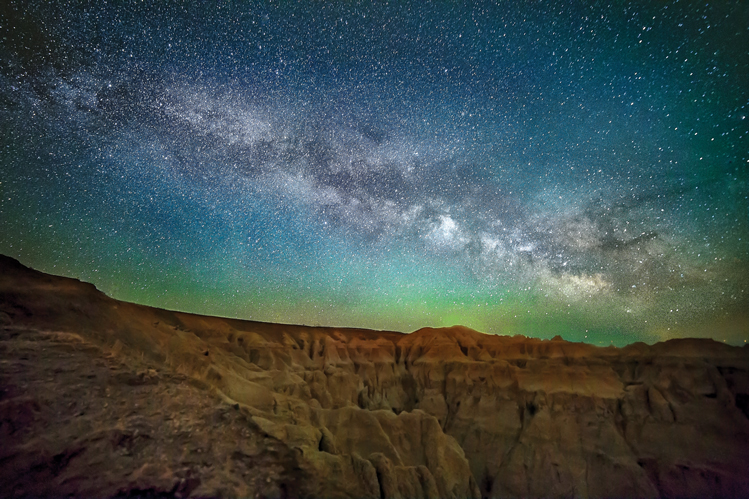 |
| The Milky Way can easily be seen in rural South Dakota, where light pollution is minimal. Photo by Eric Sprecher |
Earth-orbiting satellite photos taken at night show huge blotches of light covering vast regions of the United States from coast to coast with illumination. So it isn't difficult to understand why the places are growing fewer and fewer in our turbulent society where one may find sanctuary in some private, treasured spot uninvaded by diffused light. Fortunately, here in South Dakota — and generally in the Northern Plains — such spots are still abundant, and we may still enjoy such things as the subtle colors of dusk where the marriage of light and darkness produce the offspring of quiet beauty and peace.
Also, many of us in the plains region live where we have uninterrupted views of most horizons. If I want to see the Big Dipper to determine clock-time or the date by observing the position of the dipper's handle, I can walk a few yards from my front door in rural Howard and there it is, hovering high over the northeast horizon in mid-March. If I want to see where the morning sun's latest rising position has shifted to the eastern horizon as it moves steadily toward the north from its stay in the tropics, I can peer out of my front window. Where I have lived in the past, structures would block the view, or I would have to travel quite a distance to see such things and most often, the skies would be too hazy and the stars too faint except on very unusual evenings when clarity overrode the obscurity.
So I can assure you that when we moved back to South Dakota from Iowa we were awestruck by the unobstructed skies and amazed by the apparent indifference of many who live here and take our skies and stars for granted. A beautiful sunrise or sunset was just something one assumed because it is nearly always there. Nor was a star-studded sky regarded as unusual. Curiously, it is when we don't have something that we appreciate it the most, but when it is available to us at any time we tend to disregard its value. It is true that other states in the Midwest may also have marvelous vistas of their skies, but differences in populations and area make a crucial difference in perception. For instance, in land area South Dakota has 20,000 square miles more than the state of Iowa, yet there are 2.2 million fewer people here. Statistically, that’s approximately 55 people per square mile in Iowa, whereas in South Dakota there are only about 11 people per square mile ... of course, in both states the populations are concentrated around several metropolitan areas, but that also means a lot more rural areas here and a lot more unobstructed space from which to view the wonders of Dakota skies.
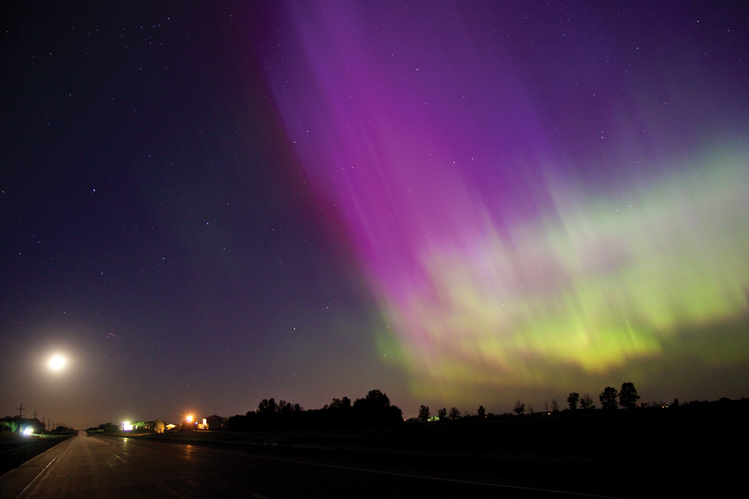 |
| The Northern lights can sometimes be seen as far south as South Dakota. Photo by Christian Begeman |
I can attest that the accessibility of Dakota skies and distant horizons is one of this state's great unheralded treasures. I was acutely aware of this reality when my family moved from Vermillion to Iowa. In Vermillion, where I taught astronomy for 18 years, I would routinely take photographs of the rising positions of the sun along the eastern horizon to show students the sun's progress through the changing seasons. Weekly changes in position were astonishing to most of them, though many had a vague awareness of this solar motion. But in Iowa, where we were usually surrounded by trees and buildings, few were conscious of this celestial ballet as the sun danced up and down along the horizons through the year. What a striking drama of the sky to miss!
In 1852, the always perceptive Henry David Thoreau wrote in his journal that, "The blue bird carries the sky on his back." South Dakota carries the sky in its heart and mind as well, and above its long, golden prairies and Black Hills day and night. In few places does the universe open its arms to the sensitive observer in such welcome.
Fortunately, for most of us living under Dakota skies, light pollution (which has become an annoyance of major proportions in many other states) is not a significant factor. Light pollution refers to the extravagant use of artificial light, particularly in cities and towns, which acts to blot out fainter light from natural sources, such as star filled skies. But here on the plains, if the weather is clear, even faint light from distant celestial phenomena is visible in most places even with yard lights present. I was particularly impressed by this one night when my wife and I were returning home through the rural countryside. We traveled on gravel roads most of the way, so no street lights or other bright illumination was present, and except for our headlights the only other light came from the stars.
It was a magnificent night. The moon, which was at the waning crescent stage, had dropped out of sight below the western horizon hours before in its eternal pursuit of the sun. From horizon to horizon the sky was like black velvet sprinkled with myriad points of glistening light. The Milky Way stood out boldly stretching among the stars like the well-trodden path the Sioux have spoken of when describing the route of departed spirits — the brightest stars along the way being campfires where the spirits paused.
 |
| Sun dogs appear when ice particles in the air refract rays of sunlight. Photo by Christian Begeman |
Constellation forms were so pronounced everywhere (even through the dusty windshield of the car) that I felt compelled to stop and get out for a moment to drink in that sweet, celestial nectar. Except for an occasional stirring by an errant western zephyr, there was no sound in those magical moments. And in that pristine splendor, my heart was grateful to be free of distracting thoughts. I was simply overwhelmed by the sheer beauty of the universe that engulfs us.
It was then that I first noticed a faint, almost indistinguishable glow along the northern horizon. There were no towns in that direction, so I surmised that it was the beginning of a display of Northern Lights — the Aurora Borealis. The ancients knew her as the "northern dawn," and she began to show her brightening face as the glow gradually crept farther up into the waiting night sky. Very faintly the glow pulsed and throbbed, resembling wind blowing through gossamer curtains. By the time we had returned home a single, faint ray stabbed up toward the zenith overhead and then fell back again into the diffuse glow along the horizon, as though it were conserving its energy. Then, it vanished.
Had we lived anywhere else but the Northern Great Plains, I doubt if we would ever have seen that subtle goddess of the night silently tiptoeing along the dark corridors of the northern horizon in her luminous gown and flowing veils.
There are so many wondrous things to see in the Dakota skies. They somehow take on a different feeling here than anywhere else I have lived — and I have lived in New York, New England, the mid-Atlantic states and Florida. Even the new crescent moon seen just above the western horizon on the plains in the early twilight moves some authors to poetic arrangements of words. Fred Schaaf, an astronomer of some note, wrote, "delicate and lovely are words that well describe the sight of a slender crescent moon afloat on the shores of the sun's afterglow, set on the edge of the deepening shades of night."
It is little wonder that the skies produce such awe and inspiration for people who are attuned to them. One has only to watch and to wonder about what is being seen. There are many things which may have sparked your curiosity and made you wonder as well. Have you ever wondered about those sundogs you've seen as the sun sets and the winds are whipping up newly fallen snow? Well, those bright patches of light are related to the softly luminous rings you may sometimes see surrounding the sun and sometimes around the moon. They are called "parahelia," and they can be very complex. I once received a telephone call from WNAX, a radio station in Yankton, when many people spotted a number of interconnecting circles of light around the sun and more than a few worried about the world's end. Others just wanted to understand what was happening in their skies.
 |
| Larger raindrops produce more vivid color in summertime rainbows. Photo by John Mitchell |
Have you ever been curious about those long dark rays that seem to stretch across the twilight sky in the summer just before a storm arrives? They are called "crepuscular rays," and some may well be the projection of cloud shadows hundreds of miles to the west of your position. They often announce the approach of a storm. And what about those falling stars (meteors), some of which are but tiny needle scratches of light and others yielding broad bands of colored light from horizon to horizon? What are they, and why are they so different from one another? And what about the common rainbow? Have you ever noticed that when you are fortunate enough to see two rainbows, the second rainbow has colors that are reversed from the first?
Not all of these wondrous phenomena are strictly astronomical in nature and some would properly belong in the meteorologist's notebook, but meteorologists, astronomers and poets share a common love for these marvels of nature. And all of us appreciate the Dakota skies, which, clothed in sparkling stars by night and bathed in the light of a glorious sun by day, sustain our bond with nature and lift our view and thoughts to other things than the world's tears.
Editor’s Note: This story is revised from the March/April 1996 issue of South Dakota Magazine. To order a copy or to subscribe, call (800) 456-5117.


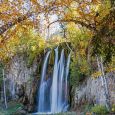

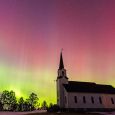
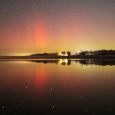
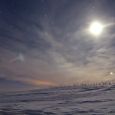
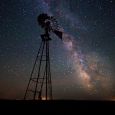


Comments